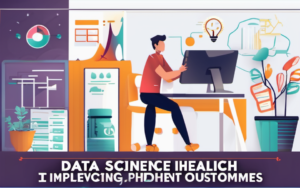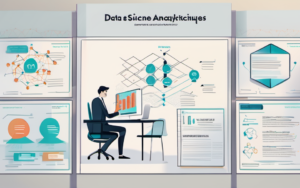In today’s competitive landscape, delivering exceptional customer experience is no longer a luxury but a necessity. Businesses are realizing that understanding their customers better is crucial for success. Data science, with its powerful analytical tools, is emerging as a game-changer in this quest to create truly memorable customer experiences.
Harnessing Data for Enhanced Customer Experience
The Power of Data in Understanding Customer Needs
Data is the lifeblood of any successful customer experience strategy. By analyzing vast amounts of customer data, businesses can uncover hidden patterns, identify trends, and gain a deeper understanding of their customers’ needs, preferences, and behaviors. This knowledge is invaluable in tailoring experiences that resonate with individual customers.
Data-Driven Insights for Personalized Experiences
The ability to personalize experiences is a key differentiator in today’s market. Data science enables businesses to segment customers based on their demographics, purchase history, browsing behavior, and other relevant factors. This segmentation allows for tailored product recommendations, targeted marketing campaigns, and personalized communication that resonates with each customer’s unique needs.
Key Data Science Techniques for Customer Experience Optimization
Customer Segmentation and Targeting
Clustering Algorithms for Customer Grouping
Clustering algorithms, such as K-means clustering, are used to group customers with similar characteristics. This segmentation allows businesses to tailor their marketing messages and product offerings to specific customer segments, increasing the likelihood of conversion and customer satisfaction.
Predictive Modeling for Targeted Marketing
Predictive models can forecast customer behavior, such as purchase likelihood or churn probability. This information can be used to create targeted marketing campaigns that are more likely to be successful, improving campaign ROI and customer engagement.
Sentiment Analysis and Feedback Interpretation
Natural Language Processing for Understanding Customer Sentiment
Natural Language Processing (NLP) techniques can be used to analyze customer feedback, reviews, and social media posts to gauge customer sentiment. This allows businesses to identify areas where customers are experiencing frustration or dissatisfaction, enabling them to address issues proactively and improve the overall customer experience.
Sentiment Analysis Tools for Feedback Interpretation
Sentiment analysis tools leverage NLP and machine learning to analyze customer feedback and provide insights into the overall sentiment expressed. This data can be used to monitor customer satisfaction, identify trends in customer feedback, and prioritize areas for improvement.
Recommendation Systems for Personalized Product Suggestions
Collaborative Filtering for Recommendations Based on Similar Users
Collaborative filtering algorithms recommend products based on the preferences of similar users. If a customer has purchased or rated a product highly, the system recommends similar products to other customers with similar purchase history or ratings.
Content-Based Filtering for Recommendations Based on User Preferences
Content-based filtering recommends products based on a customer’s past interactions, such as their browsing history or search queries. If a customer has shown an interest in a particular product category, the system recommends similar products within that category.
Real-World Examples of Data Science in Customer Experience
E-commerce Personalization
E-commerce giants like Amazon and Netflix use data science to personalize product recommendations, create targeted marketing campaigns, and deliver personalized shopping experiences. This data-driven approach has significantly improved customer engagement and conversion rates.
Customer Service Chatbots
Chatbots powered by artificial intelligence and machine learning are becoming increasingly popular in customer service. These chatbots can handle routine inquiries, provide instant support, and collect valuable customer data that can be used to improve the overall customer experience.
Predictive Maintenance in Retail
Retailers use data science to predict when equipment is likely to fail, enabling them to schedule preventative maintenance and avoid disruptions to customer service. This proactive approach ensures a smooth and efficient shopping experience for customers.
The Future of Data Science in Customer Experience
Artificial Intelligence and Machine Learning Advancements
Advancements in artificial intelligence and machine learning are driving innovation in customer experience. AI-powered chatbots and virtual assistants are becoming increasingly sophisticated, providing personalized and seamless customer interactions.
Data Privacy and Ethical Considerations
As businesses collect and analyze increasing amounts of customer data, it is crucial to address data privacy and ethical considerations. Transparency and responsible data usage are essential for building trust and maintaining customer loyalty.
The Rise of Customer Experience Analytics Platforms
Customer experience analytics platforms are emerging as powerful tools for businesses to track, analyze, and optimize customer interactions. These platforms provide real-time insights into customer behavior, allowing businesses to make data-driven decisions that enhance the customer experience.
Data Science as a Catalyst for Customer Success
By embracing data-driven customer experience strategies, businesses can create personalized, engaging, and seamless experiences that drive customer satisfaction and loyalty. Data science empowers businesses to understand their customers better, anticipate their needs, and deliver exceptional value at every touchpoint.




